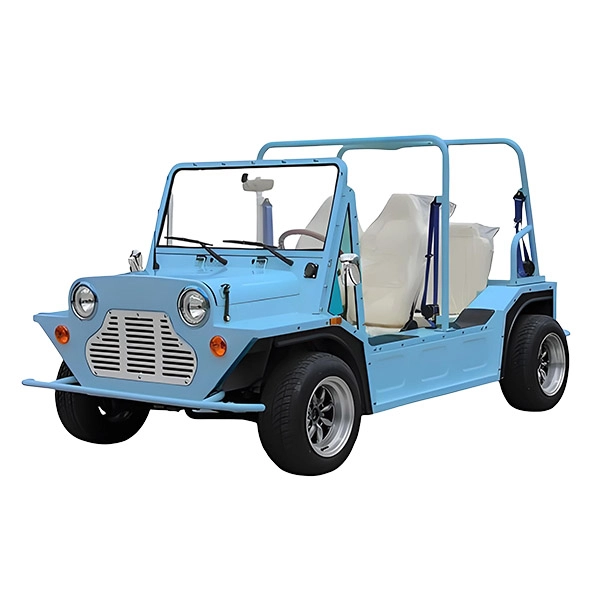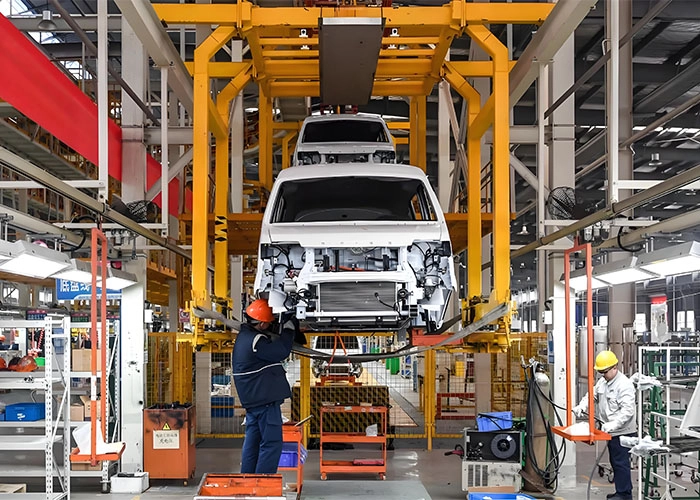In the world of completed vehicle logistics, a holistic strategy involves solutions that cover the aspects of vehicle transport, storage,e and delivery. This encompasses not the actual movement of vehicles but also incorporates the use of technology, data analysis,s and customer service to guarantee a top-notch experience. A comprehensive logistics solution typically includes scheduling, live monitoring systems, and advanced predictive models to foresee potential hurdles in the supply chain.
In depth logistics strategies also involve using methods for putting together and moving vehicles around efficiently. For example; breaking down vehicle structures into functional parts like drivers compartments, freight containers and frames enables quick assembly using standardized connections. This way meets the requirements of various vehicle types ensuring versatility and adaptability, within the logistics system.
How Is Completeness Defined in Logistics Operations?
Efficiency in managing logistics operations highlights the importance of achieving transportation from start to finish while ensuring all essential parts are present and working properly as intended.It aims at guaranteeing a flow throughout every stage of the process. From the initial collection, to the ultimate delivery. Without any interruptions or mistakes.In the realm of completed vehicle logistics this translates to cars reaching their destination entirely put together and refurbished to meet both visual criteria.
When renovating automobiles like classic cars, it’s important to focus deeply on every aspect of the restoration process to strike a harmonious balance between retaining their original charm and meeting modern safety requirements. This dual approach guarantees that the refurbished vehicles stay faithful to their designs while also aligning with today’s safety standards. Attention to detail throughout the restoration journey is key, ensuring nothing gets missed or overlooked.
Why Are These Distinctions Important for Your Logistics Strategy?
The Role of Comprehensive Solutions in Addressing Complex Needs
To effectively handle the needs of transporting assembled vehicles efficiently and reliably within a business system today, with its various partners and regulations, in different areas and customer demand, an all-encompassing plan must be put in place to effectively navigate these intricate challenges.
For example, sophisticated data analysis tools integrated into packages can anticipate delays or interruptions in the supply chain. This empowers businesses to swiftly make informed choices, reducing downtime and upholding productivity Furthermore, the use of modular assembly techniques allows for customization across vehicle models while also optimizing production schedules.
Enhanced solutions also boost customer satisfaction by offering updates on the status of shipments and maintaining openness throughout the pricing process, fostering trust and solidifying relationships between logistics providers and their customers.
The Value of Completeness in Ensuring End-to-End Delivery
Ensuring thoroughness is just as important because it ensures that every aspect of the process is carried out seamlessly from beginning to end, in finished vehicle logistics; this involves making sure that vehicles are not only delivered punctually but also in impeccable condition.
When moving completed body parts that have been put together using methods like welding from place to place, It’s important to check that everything stays in place securely throughout the journey. These assembled parts play a role in the structure of car bodies, so any harm or incorrect positioning could affect how well they work.
Attention to detail is key in guaranteeing the accuracy of documentation and inspecting vehicles throughout the supply chain process to meet customer expectations precisely. Neither more nor less, than what they anticipate receiving.
How Can You Choose Between a Comprehensive or Complete Approach?
Factors to Consider When Evaluating Your Logistics Requirements
When choosing between a strategy and a holistic one, or figuring out how to incorporate both, it’s crucial to evaluate your unique logistical requirements.Take into account aspects like;
- Complexity of Operations: If your supply chain involves multiple touch pointsor requires significant customization (e.g., modular assembly), a comprehensive approach may be more suitable.
- Customer Expectations: High-value clients may prioritize completeness over other factors, especially if they demand flawless execution.
- Technological Capabilities: Evaluate whether your organization has access to advanced tools like real-time tracking systems or predictive analytics.
- Regulatory Compliance: Ensure that your chosen approach aligns with local and international regulations governing vehicle transportation.
The Impact of Business Goals on Selecting the Right Approach
Your business goals are crucial in deciding on an holistic approach better suited to your objectives, for example.
- Scalability: If expanding into new markets is a priority, a comprehensive approach can provide the flexibility needed to adapt quickly.
- Cost Efficiency: While completeness ensures high-quality outcomes, it may require additional resources for thorough inspections and quality control measures.
- Customer Retention: A complete approach may be more appealing if your primary goal is building long-term relationships with clients through consistent delivery excellence.
In the end r mixing elements from both methods typically produces the favorable outcomes, in final vehicle logistics procedures.With a blend of planning and a steadfast dedication to precision at each step of the supply chain companies can attain operational superiority while efficiently catering to various customer demands.
What Role Do Advanced Products Play in Enhancing Logistics Efficiency?
Innovations That Bridge Gaps Between Comprehensive and Complete Solutions
In the world of finished vehicle logistics and solutions, integration is key to success! Cutting-edges technologies, like Io T-enabled tracking systems and AI-driven analytic, have transformed how logistics operations are managed.
For example, the modular assembly techniques break down car bodies into functional parts such as cabins, freight compartments, and frames. These components can be quickly put together using connections, allowing for customization of various vehicle models while still being efficient. This advancement doesn’t just cater to a range of customer requirements but also ensures that each part is delivered fully assembled and ready for use in line, with a holistic approach.
Advanced prediction models fueled by machine learning assist in forecasting disruptions in the supply chain effectively. These technological tools boost flexibility by enabling businesses to tackle issues in advance before they worsen. Such advancements showcase how sophisticated solutions connect the dots, between planning and flawless implementation.
How Specific Products Can Streamline Finished Vehicle Handling
Tailored products meant for the transportation of finished vehicles are vital in making handling processes more efficient. For instance; automotive body parts made through welding have been specially designed to endure the challenges of transportation while keeping their strength intact. These parts are elements of automotive body structures; hence ensuring their secure handling is essential for the success of logistics, as a whole.
Furthermore automated guided vehicles (Ag Vs) along with arms have revolutionized warehouse procedures by automating activities like loading, unloading and sorting of vehicles or their parts. These advancements decrease the need, for labor reduce mistakes and speed up the time taken to complete tasks.
When working with vehicles or restoring classic car bodies to their former glory and ensuring they meet current safety standards requirement use of sophisticated tools to maintain historical charm while keeping up with modern safety regulations without compromising style or tradition in the final result of vehicle restoration processes.
FAQ
Q1: How does Shandong Tairui ensure scalability in logistics solutions?
A: Their modular designs allow businesses to easily add or adjust components as needs evolve, making expansion seamless across different markets and product types.
Q2: What makes Shandong Tairui’s products durable for long-distance transport?
A: They use high-quality materials and precision manufacturing to withstand rigorous shipping conditions, preventing damage to sensitive cargo like finished vehicles.
Q3: How does technology integration enhance their logistics offerings?
A: Io T sensors and real-time tracking provide end-to-end supply chain visibility, improving efficiency and transparency for clients.



